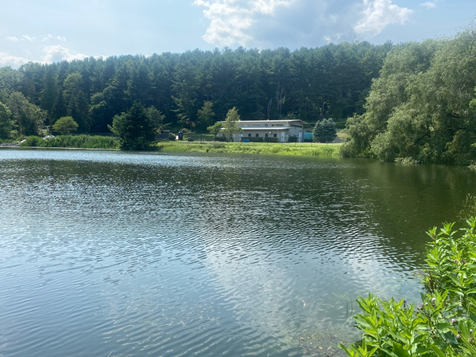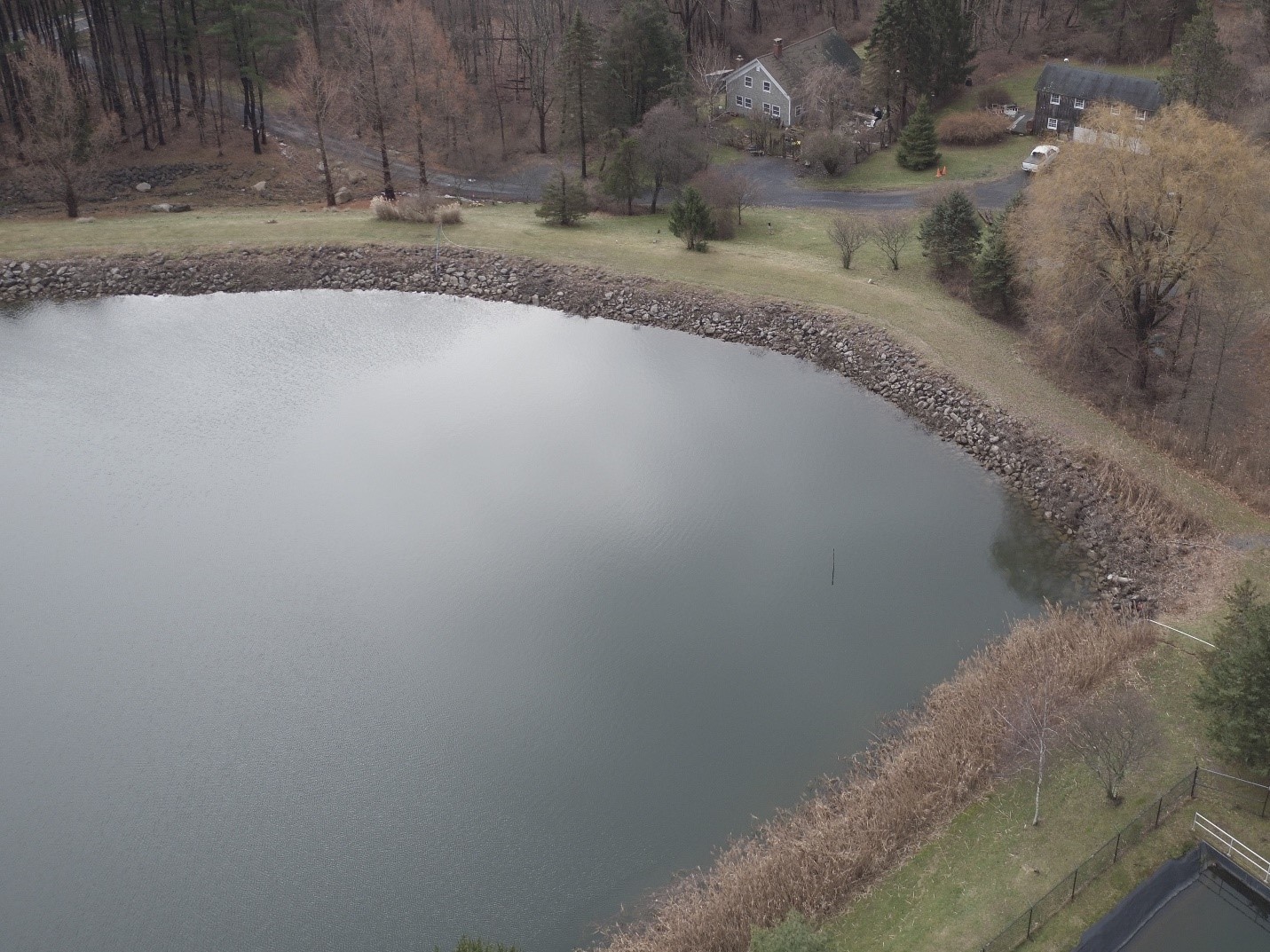Drinking Water Source Protection Program (DWSP2) - November Newsletter
The New York State Department of Environmental Conservation sent this bulletin on 11/19/2021 04:04 PM EST |
| DEC Delivers - Information to keep you connected and informed from the NYS Department of Environmental Conservation |
| Share or view as a web page || Update preferences or unsubscribe |
Drinking Water Source Protection Program - November NewsletterThis issue's topics:
|
Technical Assistance Providers Available to Protect Your Drinking Water!Have you heard that the State is looking for communities interested in working with a technical assistance provider (TA provider) to develop and implement a DWSP2 Plan for their source of drinking water.
If you would like to work with a TA provider, head over to the DWSP2 webpage and complete an application. Once completed, submit the application by using the submit button at the bottom of the PDF. If anyone has any questions, reach out to the DWSP2 Team at source.water@dec.ny.gov.
What can I expect?As a reminder, TA providers work with the community every step of the way, using the DWSP2 Framework, to develop a DWSP2 Plan specific to their community and drinking water source. TA providers will:
Fill out an application today! New Paltz and their Experience with DWSP2DWSP2 is well underway with over 30 communities working proactively to protect their drinking water sources. One such community has nearly completed their plan development, and we are excited for you to hear about their experience. We sat down with Thomas T. (Ted) Nitza, Jr., P.E., one of the co-chairs of the DWSP2 stakeholder group for the Village of New Paltz DWSP2 Plan, to talk about his experience. Ted lives in the Town of New Paltz, right on the town/village boundary. He is an environmental engineer and one of the vice presidents of Walden Environmental Engineers, PLLC and is the chair of the village’s Environmental Policy Board. He is a long-time volunteer in the New Paltz community and is often involved in utility and water issues.
Introduction to the Village of New PaltzThe Village is located in the Hudson Valley region of New York in Ulster County. They chose to participate in DWSP2 early on and partnered with the Hudson Valley Regional Planning Council (a free TA provider), Chazen, and Fairweather consulting to develop a DWSP2 Plan for their groundwater and surface water sources. The main reason behind the Village’s decision to participate in DWSP2 was to protect both old and new drinking water sources. As they were getting started, one of the first things they recognized was that the Village’s drinking water source area extended beyond their municipal boundary. They also knew the Village serves both the neighboring Town of New Paltz and SUNY New Paltz with drinking water. As encouraged by the Framework, the Village reached out to both the Town and University and both agreed to participate on the Village’s DWSP2 stakeholder group. Local Champion, Interested PartnersVillage Mayor Tim Rogers works to protect, enhance, and keep the cost of utility services low in the community. As part of this effort, he wanted to make sure the drinking water sources were diverse, affordable, reliable, and, most importantly, protected not just for the Village, but for the Town and University as well. Equally as interested in resource protection and avoiding bigger costs later, the New Paltz Town Supervisor Neil Bettez also supported the DWSP2 effort with his own time and the attention of the Town’s Boards and Commissions to further diversify groundwater sources for the future. Lastly, the SUNY New Paltz community partnered substantially by having Dr. Brandon Bera, a professor of Chemistry, water quality enthusiast and skilled educator in the community, co-chair the stakeholder group. The Mayor championed the DWSP2 effort in his community backed by solid and engaged community partners from the Town and SUNY
Stakeholder GroupAs you may have seen from our past newsletters, presentations, and outreach materials, the State emphasizes the importance of the stakeholder group to the DWSP2 effort. Mayor Tim Rogers did the initial outreach to potential stakeholders in the New Paltz area, leading to a diverse group that is representative of those who are served by the public water supply. While the Village did not use an existing group, the stakeholder group did contain a few familiar faces of members who have collaborated in the past on other projects.
The stakeholder group used a two-prong approach to work through the steps of developing their protection plan. The first was a monthly stakeholder group meeting for 1 to 1.5 hours. To prepare for the stakeholder group meetings, an executive committee of the stakeholder group was formed and consisted of the volunteer co-chairs, Village Assistant Ariana Basco and the facilitators from the Hudson Valley Regional Planning Council. The executive committee met two weeks prior to each stakeholder group meeting for about 30 minutes and prepared stakeholder group meeting agendas and discussed implementation strategies. The stakeholders felt this approach was more efficient and helped them move through the work quickly. Members that participated in both the stakeholder group and executive committee felt the extra time commitment was worthwhile. Implementation StrategiesAnother key piece of plan development is implementation. The stakeholder group and executive committee came up with ideas and strategies that were specific to the needs of their community. The implementation strategies came about from developing maps, taking a tour of the regional reservoirs and drinking water treatment plant, reviewing information found in the Framework, and knowledge/expertise of the stakeholder group members.
Photo Credit: Nikita Oarcea, Walden Environmental Engineering. A view of the Village of New Paltz reservoir. Public EngagementTo make sure the public was aware and involved in the development of their DWSP2 Plan, the stakeholder group collaborated with Chana Friedenberg, facilitator with the Hudson Valley Regional Planning Council, on a press release, presentations to both the Village and Town Boards, and adding helpful information on the Village of New Paltz website. Overall, the Village received good feedback as a result of this public engagement. For example, one community member pointed out an area near the reservoir that they felt should be looked into further. Thanks to the feedback from this community member, the site was added to the potential contaminant source inventory of the DWSP2 Plan. Another community member pointed out that this DWSP2 plan could garner the community additional points under the Climate Smart Communities Source Water Protection Action. Questions and AnswersWe also asked Ted for a few pearls of wisdom to share with other communities. Let’s see what he had to say. Q: What was the most exciting part of DWSP2 for Ted?A: Ted is an engineer that also lives in the community. The ability to learn more about the drinking water and wastewater systems in the community where he lives was great. During these times, it was also nice for him to interact with the stakeholder group and meet new people. Working with Chana and the Hudson Valley Regional Planning Council to develop this plan was a great experience for him. Q: What advice would Ted give to others working on a DWSP2 Plan?A: He isn’t sure what would have happened if the Village had done this without a TA provider. Working with the Hudson Valley Regional Planning Council, Chazen, and Fairweather Consulting really helped to facilitate this project and build the momentum. Another piece of advice he would give is to have a stakeholder group with various backgrounds and expertise. Having two groups (stakeholder group and executive committee) and meeting on a staggered basis was a great approach. This ensured they were focused, effective, and set-up for success of the plan. Q: Any benefits of the program to share?A: The community and its drinking water supply are better protected now that the Village has gone through the DWSP2 process. They were able to learn and discover vulnerabilities along the way that they were able to fix and are now better prepared for the future. A few more benefits:
Q: Any unexpected positive outcomes that came out of the DWSP2 Plan development process?A: The community already had some pieces in place to protect the source water. For example, after Chazen had completed the drinking water source protection maps, the stakeholder group learned that a portion of the surface water runoff was diverted away from the community’s reservoirs. This was good news because the drinking water was more conservatively protected than they were aware of! Q: Anything new Ted got to do (or learned) under this project?A: The stakeholder group was able to tour the reservoirs and water treatment plant which many had not been able to do before. Ted enjoyed learning more about the history of the developments of the community water sources and aqueduct that traverse their community. Learning more about this and the groundwater side of this drinking water source was very interesting for Ted. Q: Any thoughts on adopting the DWSP2 Plan or tying its review to your comprehensive plan updates?A: The assistant to the Mayor brought up this idea. All the stakeholders recognized that the more the DWSP2 plan is connected to existing plans, the more engrained the DWSP2 plan becomes, and more likely for it to become successful. If this plan is a standalone (document), it will need champions to spearhead it, which may be harder to find. Therefore, latching it onto existing efforts will make it more likely to succeed.
Photo Credit: Scott Harrigan, Harkin Arial. A drone shot of the Village of New Paltz reservoir. Share Your ThoughtsHave you begun this process? Or do you have a program or are aware of a program relevant to source water? Send in any helpful hints or information at source.water@dec.ny.gov and we may highlight them! Sign UpTo sign-up for the DWSP2 newsletter, visit the DWSP2 webpage or click here. Newsletter ArchiveMissed last month's edition? Visit the DWSP2 Newsletter Archive to stay up to date. |
|
|


